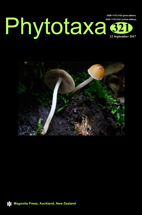Abstract
The genus Manfreda (Asparagaceae) contains 35 species. A species complex includes plants similar to M. gutttata, which are characterized by the protrusion of the ovary into the perigone tube. This feature was found in specimens recently collected in western Mexico. After a morphological analysis, we found that some of the plants differ from the other species in this complex. Hence, we describe a new species named M. occidentalis morphologically similar to M. planifolia but can be distinguished from it by the oblong-ovoid corm, channeled leaves, which are papillate on both sides, perigone 1.8–2.5 cm long, funnel-shaped, yellowish and light purple striate, perigone tube 0.3–0.7 × 0.2–0.4 cm, filaments adnate to the perigone and arising 0.3–0.7 cm above the ovary apex, anthers 0.9–1.1 cm long, and style 2.1–3.5 cm long, exceeding the perigone tube by 1.8–3 cm at anthesis. Manfreda occidentalis also resembles M. chamelensis; however, phenologic asynchrony is a notable difference between them as well as the shape of the leaves and the length and shape of perigone tube and lobes. A distribution map, photographs, and a key to identify species of Manfreda which grow in western Mexico accompany the description.

